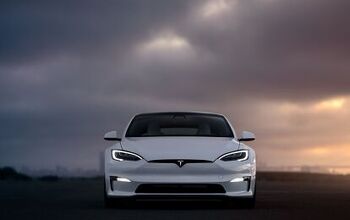Why Is Nissan Cutting Prices?
One of the bigger stories of 2013 has so far managed to escape the news cycle. I’m not exactly sure why Nissan’s announcement of significant reductions on the MSRP of new cars hasn’t gotten more coverage, but I’m also not 100 percent sure of Nissan’s motives either.
The Canadian Press, one of the few outlets to cover the news, does a good job of not burying the lede here
Nissan is cutting prices on seven of its 18 models in the U.S., hoping its cars and trucks will show up in more internet searches by shoppers. The price cuts vary with the amount of equipment on each model. They run from 2.7 per cent, or $580 US, on the top-selling Altima midsize car to 10.7 per cent, or $4,400, on the Armada big SUV. Executives are under pressure to sell more cars, with Nissan’s CEO targeting a 10 per cent U.S. market share within three years.
Nissan is aggressively pursuing their marketshare goal with VW-like fervor; witness the revamp of almost all of their products, which have become even more oriented towards the tastes of American consumers (if such a thing were possible). The Altima, once the original Japanese mid-size muscle sedan, is now just another generic entrant, while the Pathfinder, criticized by armchair off-roads for becoming a crossover, is pretty good at fulfilling its duties as a family hauler that looks like an SUV.
Apparently, Nissan felt that the sticker prices of their cars were too high to be competitive in online car shopping searches. Nissan must want to get in front of consumer eyeballs badly enough to incur the massive pain-in-the-rear that comes with such a move. Since the discounts only apply to cars about to be shipped to dealers (and extended indefinitely), cars currently sitting on dealer lots will get some serious incentives to help dealers move them.
Our industry sources tell us that this will cost Nissan about $100 million, about the same price tag as a new model development program for many manufacturers. This is not a small expenditure, even for a firm as big as Nissan. But it does highlight the importance that many manufacturers are placing on volume, which, in the absence of decent margins, is seen as the way to make money building cars.
More by Derek Kreindler
Latest Car Reviews
Read moreLatest Product Reviews
Read moreRecent Comments
- 1995 SC If the necessary number of employees vote to unionize then yes, they should be unionized. That's how it works.
- Sobhuza Trooper That Dave Thomas fella sounds like the kind of twit who is oh-so-quick to tell us how easy and fun the bus is for any and all of your personal transportation needs. The time to get to and from the bus stop is never a concern. The time waiting for the bus is never a concern. The time waiting for a connection (if there is one) is never a concern. The weather is never a concern. Whatever you might be carrying or intend to purchase is never a concern. Nope, Boo Cars! Yeah Buses! Buses rule!Needless to say, these twits don't actual take the damn bus.
- MaintenanceCosts Nobody here seems to acknowledge that there are multiple use cases for cars.Some people spend all their time driving all over the country and need every mile and minute of time savings. ICE cars are better for them right now.Some people only drive locally and fly when they travel. For them, there's probably a range number that works, and they don't really need more. For the uses for which we use our EV, that would be around 150 miles. The other thing about a low range requirement is it can make 120V charging viable. If you don't drive more than an average of about 40 miles/day, you can probably get enough electrons through a wall outlet. We spent over two years charging our Bolt only through 120V, while our house was getting rebuilt, and never had an issue.Those are extremes. There are all sorts of use cases in between, which probably represent the majority of drivers. For some users, what's needed is more range. But I think for most users, what's needed is better charging. Retrofit apartment garages like Tim's with 240V outlets at every spot. Install more L3 chargers in supermarket parking lots and alongside gas stations. Make chargers that work like Tesla Superchargers as ubiquitous as gas stations, and EV charging will not be an issue for most users.
- MaintenanceCosts I don't have an opinion on whether any one plant unionizing is the right answer, but the employees sure need to have the right to organize. Unions or the credible threat of unionization are the only thing, history has proven, that can keep employers honest. Without it, we've seen over and over, the employers have complete power over the workers and feel free to exploit the workers however they see fit. (And don't tell me "oh, the workers can just leave" - in an oligopolistic industry, working conditions quickly converge, and there's not another employer right around the corner.)
- Kjhkjlhkjhkljh kljhjkhjklhkjh [h3]Wake me up when it is a 1989 635Csi with a M88/3[/h3]































Comments
Join the conversation
My wife and I use to buy a new Nissan every year cause we liked the new car thing and as long as we stayed with Nissan, we kept the same payments. I guess it was like a 1 year lease without the lease. But, try to sell or trade them for anything else, you'll get your feelings hurt!
"about $100 million, about the same price tag as a new model development program for many manufacturers" Not sure about this.